John Atkins explores the break-barrel and under-lever air rifles of the 1930s in this fascinating historical piece...
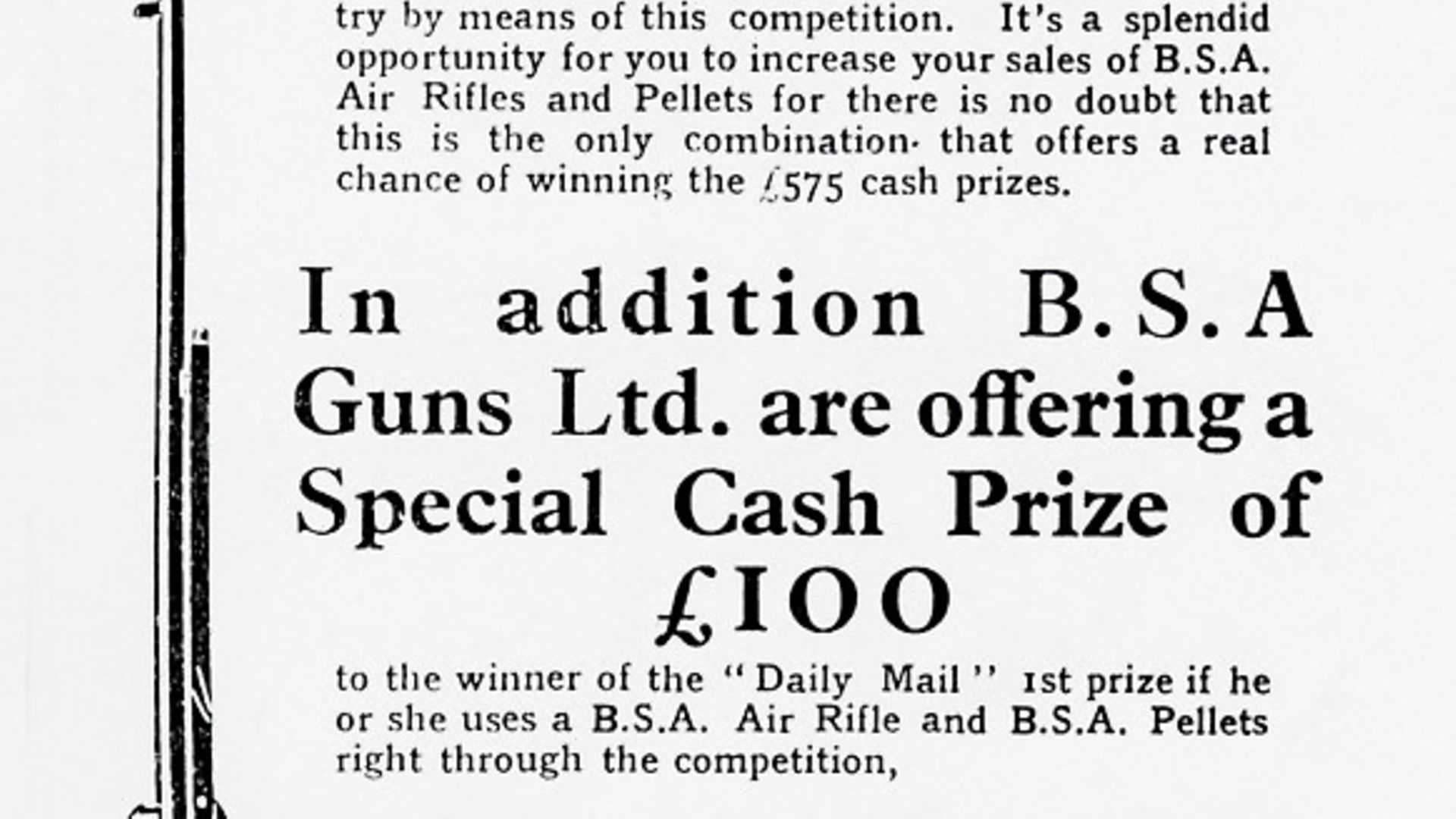 credit: Archant
credit: Archant
Ninety-two years ago, the January 31st, 1929 issue of The Sporting Goods Review and The Gunmaker (TSGR) reported that BSA air rifles continued to be a very popular line. Their accuracy was widely known as proved by the fact that they were the rifles specified for The Junior Air Rifle Team Championship held at the Schoolboys’ Own Exhibition. TSGR understood that more than 8000 boys used BSA air rifles on the S.M.R.C. (Society of Miniature Rifle Clubs) range at this Exhibition, a fact almost sure to create an even brisker demand for these rifles than usual. TSGR suggested that dealers should get in a good stock now to meet the demand of the spring and summer season.
Sales were probably not as buoyant as that editorial suggested. If they were, it was sadly not to last. Times were even tougher later on from September 1929 following the Wall Street Crash and Depression that affected everything, with the value of British exports halved, plunging our industrial areas into poverty. In the early 1930s, with unemployment approaching three million by 1932, most would-be shooters could not afford a BSA under-lever air rifle at £4. The February 28th, 1929 issue of TSGR carried the BSA/Daily Mail promotion of their air rifle prize shooting seen in Fig 1 to boost sales.
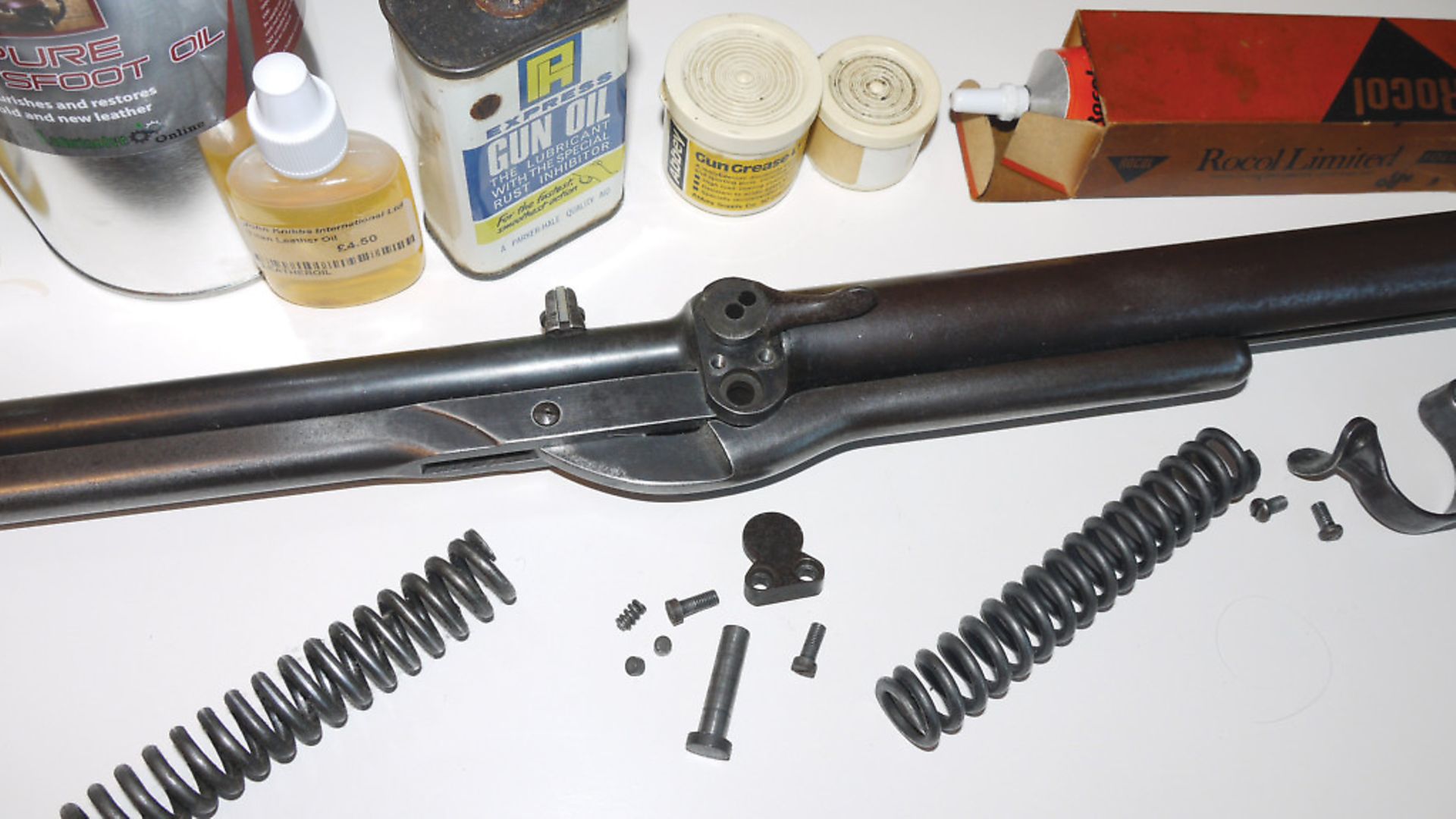 credit: Archant
credit: Archant
NEW TECHNOLOGY
The 1930s saw a lot of new technology, including wide-screen colour films; the air mail service across the Atlantic and the first intercontinental commercial flights; the Mallard becoming the fastest steam locomotive; the first colour film for cameras and the first bass guitar invented in Seattle Washington in 1936. However, B.S.A. Guns Limited stuck to what they did well by continuing production of the successful Lincoln Jeffries/BSA under-lever cocking, tap-loading air rifles with several model changes and added a more-affordable, direct breech loading, break-barrel cocking model to their range, although no attempt appears to have been made to substitute a modern half-stock like some of the German imported air rifles, with BSA continuing with their old-style quarter-stock.
In this occasional series, looking at BSA air rifles of both the pre-1914 and between the wars periods, I reached 1929 last time, with a look at the leather piston washer fixing patented by BSA Ltd. and their engineer George Norman that year; although there were no further patented inventions during the 1930s. As well as having the new piston, my three-hole trigger block rifle, serial numbered S42548, believed from 1929, also incorporated a clever move from BSA with the cocking lever axis screw becoming a plain large flat headed pin secured flush in position by the breech tap retaining plate on the left hand side. Figure 2 shows the removed plate and pivot pin. This simple, but brilliant idea saved slotting and screw-threading the pivot bolt component and did away with the need for a keeper screw. All you see from the other side of the breech is the neat small end of the stepped pin, instead of a large slotted screw head. I purchased the .22 BSA No. S42548 for £10 from the owner of a restaurant located in the middle of a marsh, but it had surface rust I had to spend time removing – and it was a while ago.
Other noted modifications that had been made to my 1929 BSA Standard .22 calibre air rifle included flattening-off the breech loading area. Figure 3 shows the flattened breech top of no. S42548 BSA Standard compared with that of an earlier 1920s Standard No. 2 Sporting Pattern .22 rifle with rounded form breech top – seen on the right.
Another comparison view in Figure 4 shows the 1929 BSA (left) alongside a German Haenel Mod. VI from a little earlier. It seems possible BSA’s new flat breech idea was borrowed from Haenel Models VI, VIE and their other large under-lever rifles. As the Haenel under-levers were blatant copies of the Lincoln Jeffries /BSA designs, maybe it was only right that BSA took something back from them, although the similar flat breech tops might just be coincidental, of course. One of the first BSA advertisements to invite credit was carried in the ‘Boy’s Own Paper’ of June 1929 (Figure 5) offered no deposit, easy payment terms over 12 months, with instalments of from 7/6d (37½p).
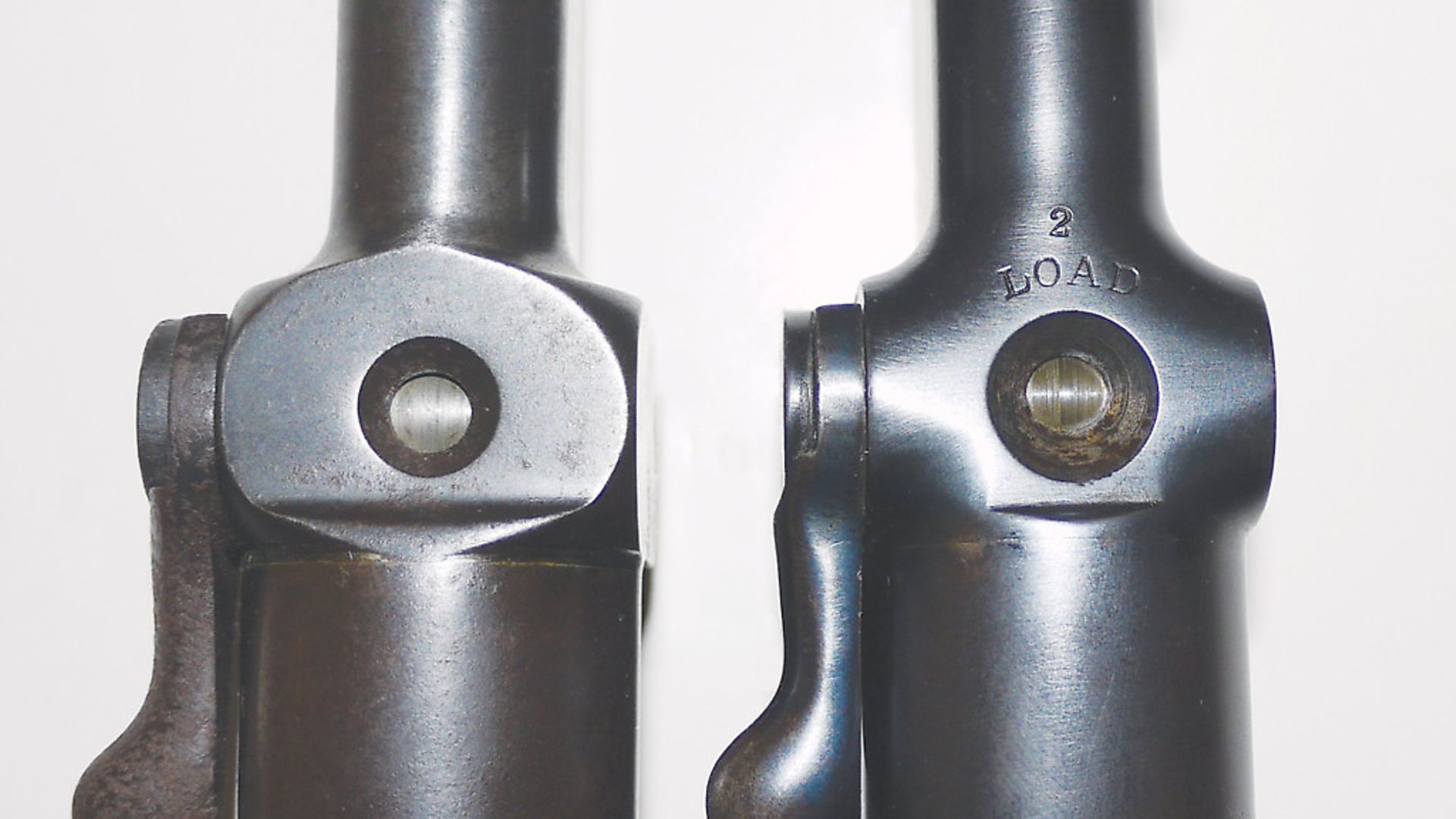 credit: Archant
credit: Archant
BACK IN 1930
Lot 839 in Wallis & Wallis’ auction sale on 12 June 2018 was this .177 BSA seen as Figure 6 described in the auctioneers’ catalogue as a BSA ‘Club Special’ no. CS 42746 (1930) 45½ inches long, in good clean condition with no visible cylinder markings as it appeared well refinished. Figure 7 reproduces an A. G. Parker & Co. Ltd., BSA page of their June 1930 catalogue showed the Light or No. I model .177 calibre rifle, they stated was 40 inches long - although most are a little under this. The cost was £4. Below, at £4.10 shillings (£4.50) is the 45¼ -inch long, .177 model that Parker’s called the BSA ‘Special Club’.
The Parker mid-1930 catalogue page informs: ‘It was to meet the ever-increasing demand for members of Air Rifle Clubs that the B.S.A. decided again to produce a longer and heavier model on similar lines to the pre-war Standard Pattern.’ They justified the ‘Special’ status for the rifle by saying: ‘This ‘Special Club’ model has an improved mechanism for the regulation of the trigger pull.’
In reality, most club shooters hadn’t wanted an overpowered ‘Giant’ model for close-range, paper target work, but actually wanted the pre-war ‘Normal’ size BSA back – the 43¼ -inch long .177 model. BSA then catered for their needs with a new air rifle for club shooting, the No. 4 Club in 1930, also bearing the CS prefix to serial numbers. On the following page of Parker’s 1930 catalogue, the final model of the BSA range appears: The BSA ‘Sporting’ Pattern .22 air rifle also at £4.10 (£4.50) – as I showed in Part 10, Page 83 of Air Gunner in the November 2020 issue. The 1930 A. G. Parker catalogue was probably compiled rather too early for the new No. 4 Club model to feature.
The terms ‘Club Special’ or ‘Special Club’ are confusing (to me at least!) and don’t appear to have been official BSA titles, as John Knibbs’ excellent history of BSA book: The Golden Century informs that the ‘CS’ prefix initials before serial numbers actually stood for ‘Club Standard’ rather than ‘Special’ - so it seems these air rifles with a ‘CS’ prefix should be referred to just as ‘Club Standard’ and the No. 4 Club .177’ models. Most had single-hole trigger blocks and reverted to the old pre-World War One-style trigger adjustment screw and lock nut through the guard front, produced 1930 to late 1935, with the ‘C’ prefix ‘Club Standard No. 4 replacing them in late 1935 to 1939.
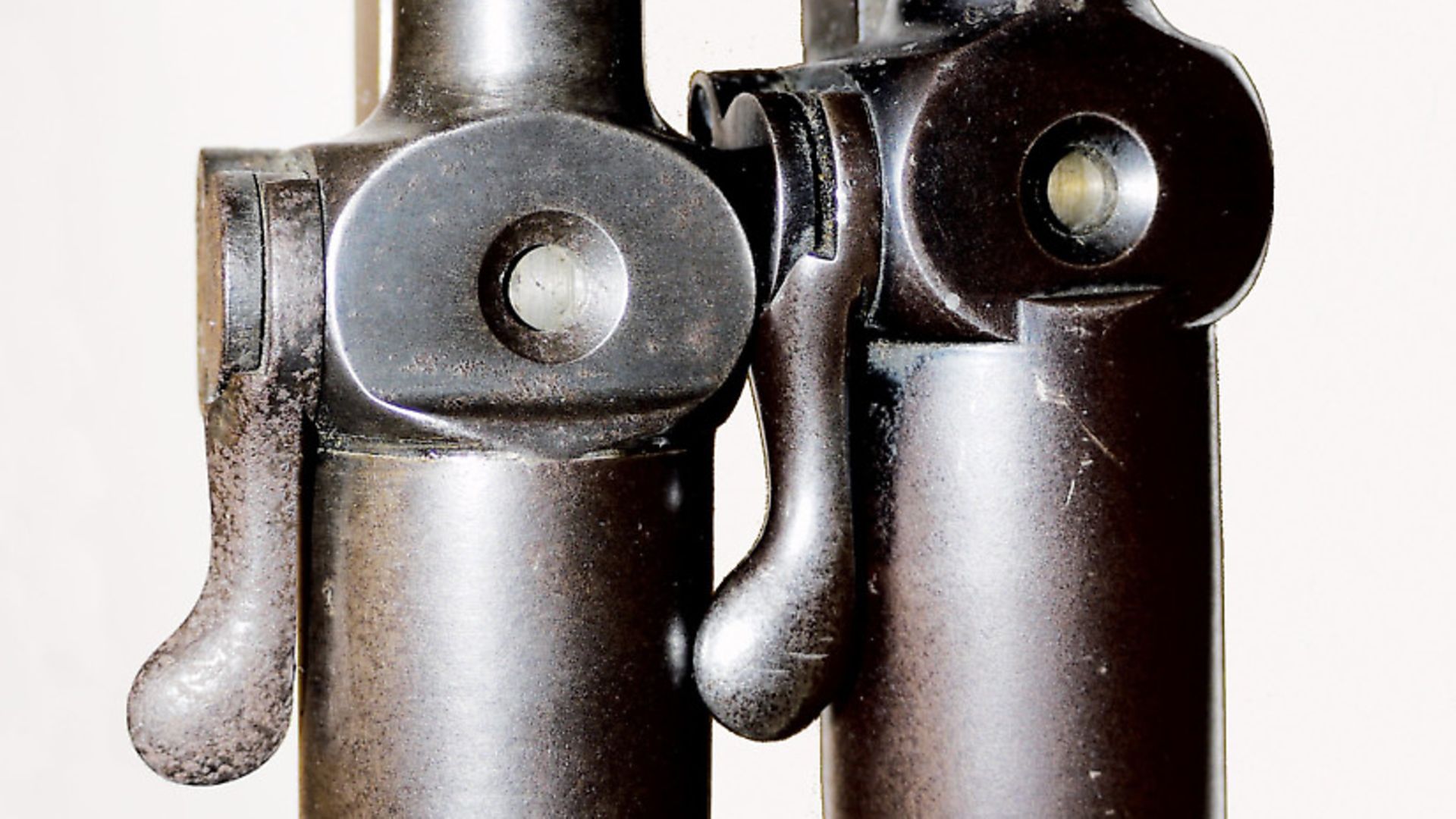 credit: Archant
credit: Archant
MID ‘30s DESIGN UPDATES
The three BSA under-lever models were updated in 1935 to streamline the range and standardise components, and 1936 saw the arrival of the ‘T’ prefix BSA ‘Standard’ No. 2 .22 calibre air rifle that continued until 1939, a few I’ve handled, still had the three-hole trigger blocks. My friend, Ron Cox, once brought a T-prefix Sporting Pattern BSA to me, which was cleaned off to bright steel, overall. Judging by the corrosion, it seemed to have been underwater for some time with extensive pitting. The cylinder had such large pits, my fingers fitted into them, making a sort of comfortable ‘anatomical’ cylinder – allowing a good grip on the gun’s forepart. Ron said it was very accurate and powerful but I declined to fire it, fearing flying shrapnel, should the weakened cylinder wall burst on discharge.
Also updated in 1935/6 was the Club No. 4 introduced in 1930 with a similar rifle to the new ‘T’ prefix .22 air rifle but in .177, of course, and smaller at 43½ inches overall. Given a ‘C’ prefix and photo etched as the ‘Club No. 4’, they were made until October 1939.
The old L-prefix Light Pattern Standard was also replaced with a smaller, 39½-long version of the Club No. 4 and serial numbers were then prefixed with a letter ‘A’ and sold alongside its bigger brothers until the outbreak of World War Two.
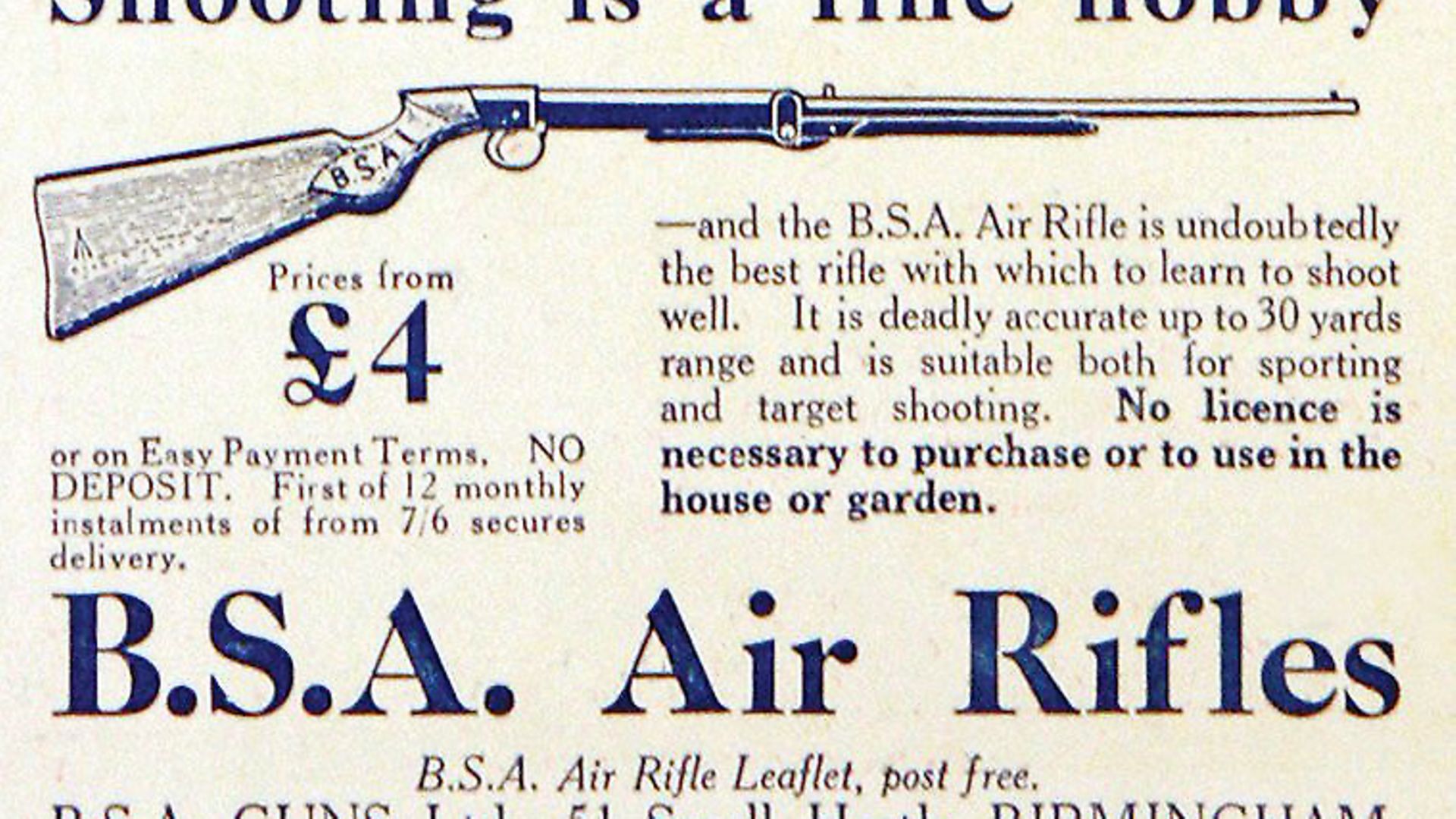 credit: Archant
credit: Archant
BSA BREAKDOWN MODEL
The .177 BSA ‘Breakdown’ model air rifle of 1933 to 1939 was made prior to the Second World War. The name ‘Breakdown’ has negative connotations that were unfounded because many of these strong and reliable Breakdown Patterns stood years of fairground misuse, until largely replaced post-war by BSA Cadets (first appearing in Dec. 1945) and Diana No. 25s in the ‘50s.
I’ve always thought it ironic that BSA, after running down break-barrel airguns as inferior to their tap-loading, fixed barrel under-levers for years, should have had to do a ‘U-turn’ and introduce a drop barrel air rifle, but they needed a cheaper model to sell at that time. Foreign imports of Haenel, Diana and other German break-barrel airguns and rifles, plus smaller scale, home products from The Midland Gun Co., all prompted the necessity for BSA to break with their under-lever tradition and go down the break-barrel route and produce a model to rival the long-established Diana No. 27, the Haenel Model II and others. Unfortunately, at the time, the new drop barrel BSA would undoubtedly have also taken some sales from the BSA Light Pattern model. However, the Breakdown model was the important forefather of the very successful post war BSA Cadet and Cadet-Major models.
 credit: Archant
credit: Archant
ECONOMIES
To sell initially at the competitive price of only 45/- (£2.25) some economies had to be made, so the new break-barrel air rifle was made lightweight at only 5lbs 7ozs (2.46kg) and fairly simple, with no novel features to patent. Rather than a separate trigger and sear with adjustment through the sides of a three-hole trigger block like the No. 1, or Light model, the single-piece trigger/sear of the new BSA Breakdown pivoted in a one-hole trigger block, and like the later Standard model ‘A’ Series, ‘CS’, ‘C’ and most ‘T’ prefix under-levers, reverted to the pre-Great War style screw with lock nut through the front of the pressed guard. For both Breakdown and prefix ‘A’ Series Light model and others, the serial numbers were moved further down from the side of the trigger block to just above the triggers.
Figure 8 shows the BSA ‘Breakdown’ Pattern air rifle selling for 45 shillings. (£2.25) or on easy terms 4/3d (c.21p) a month advertised in ‘Harper’s Sports and Games Distributor’ May 1934. An unused BSA Standard Target Card for 10 yards advertised the Standard and Club models both in .177 bore and the Sporting Model .22 bore, but not the Breakdown pattern rifle, so the card target reproduced as Figure 9 is probably pre-January 1933.
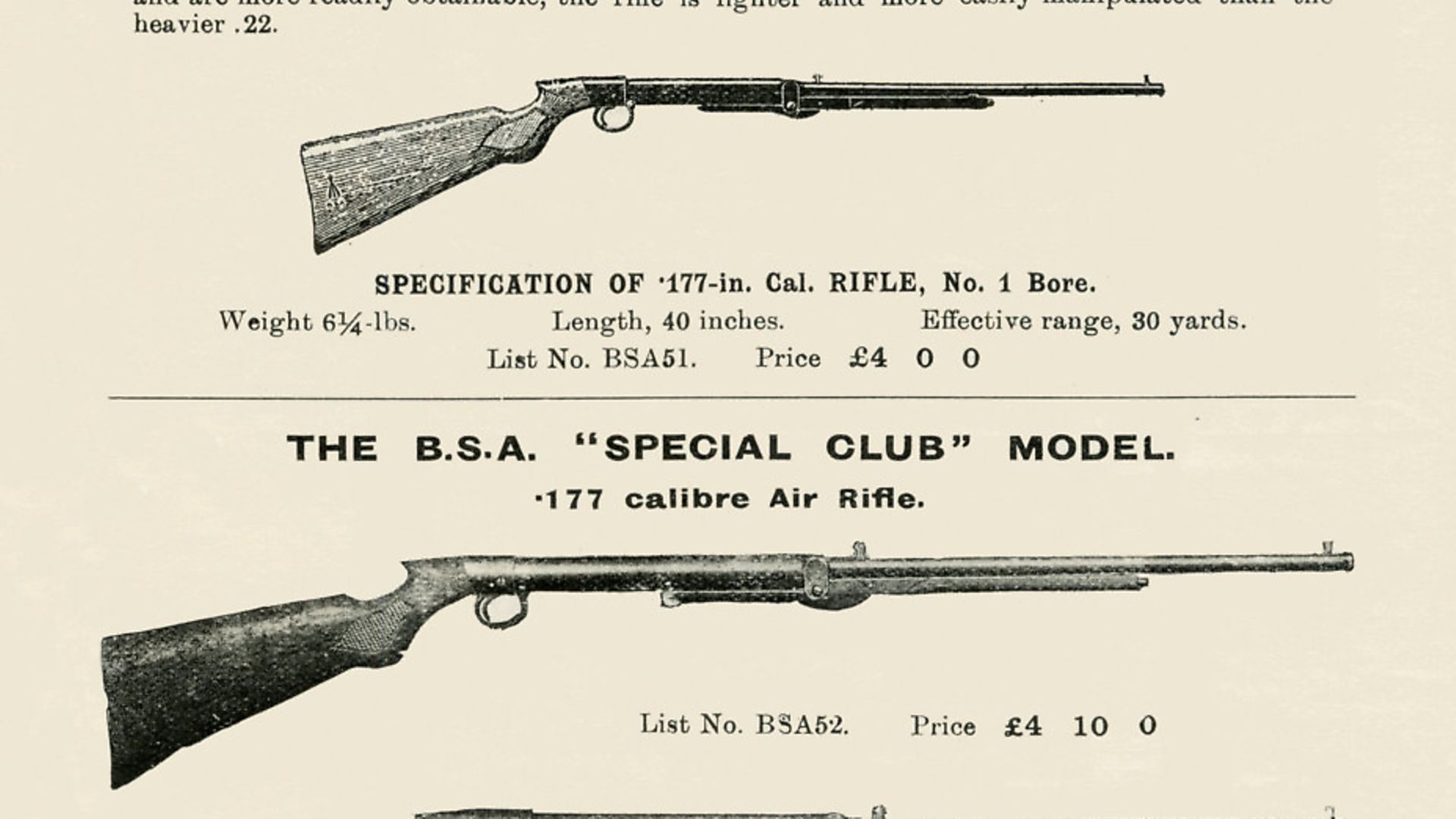 credit: Archant
credit: Archant
SLIM DIAMETER
BSA Standard under-lever models and ‘Breakdown’ model advertised in an undated BSA leaflet feature in Figure 10. For dart shooting, the Breakdown pattern could be supplied smooth bore to order and also with ‘a modified type of piston spring necessary for this type of shooting to give lower velocity.’ In other words, a weaker mainspring due to the lightweight darts blowing straight out without affording any cushioning as a tight fitting pellet would, to prevent ‘bottoming’ of the piston and damage to the head. Specification is detailed, giving their range of ‘Standard’ under-lever cocking models: The No. 1 ‘Standard’ Light Pattern .177, 39¼ inches long at £4; the No. 2 Standard .22, 45¼ inch and No. 4 Club Model .177, 43½ inches long, both at £4.10s (£4.50) plus the ‘Breakdown’ model .177 at 41½ inches long selling at £2.10s (£2.50).
The ‘saw handle’ overhang of the Breakdown butt shown in publicity drawings might feature on early models but all I’ve seen have had a trimmed back overhang as shown in my photograph Figure 11 - rather than the similar shape butt as fitted to the under-levers. Top: BSA Standard No. 1 Light model, ‘A’ letter prefix, under-lever, serial number A1767 from late 1936, fitted with the standard 14¼ inch pull length butt. These BSA Standard ‘A’ Series tap loading air rifles followed on from the ‘L’ prefix Light patterns. This one is actually 40 inches long, but on average, I’ve found ‘Light’ patterns are about 39.75 inches overall, against an average of 43.75 inches for the ‘Standard’ size BSA under-lever air rifles.
Central in the photo is Breakdown model air rifle serial number B6515 around late 1938. Lower: Breakdown model serial no. B3222, probably early 1937. From this photo, you might be able to see the Breakdown rifle was fitted with a slimmer cylinder than all the under-levers – apart from the then long obsolete, dainty BSA ‘Juvenile’ pattern, which had an equally slim diameter cylinder.
BSA Breakdown model air rifles were sold during the January 1933 to 1939 period; serial numbered B6515 being 41½ inches long. The earlier models were initially sold at the same price as the Midland Gun Co’s. engraved Model de Luxe in No. 1 (.177 bore). Whilst both the Midland’s break-barrel models were also available in No. 2 (.22 bore) for 5/- (25p) extra, the BSA Breakdown was offered in .177 only. Probably a wise decision, as the slim-cylindered rifle was also aimed at older boys and youths with limited funds and the cost of .22 pellets was considerably more than .177, of course.
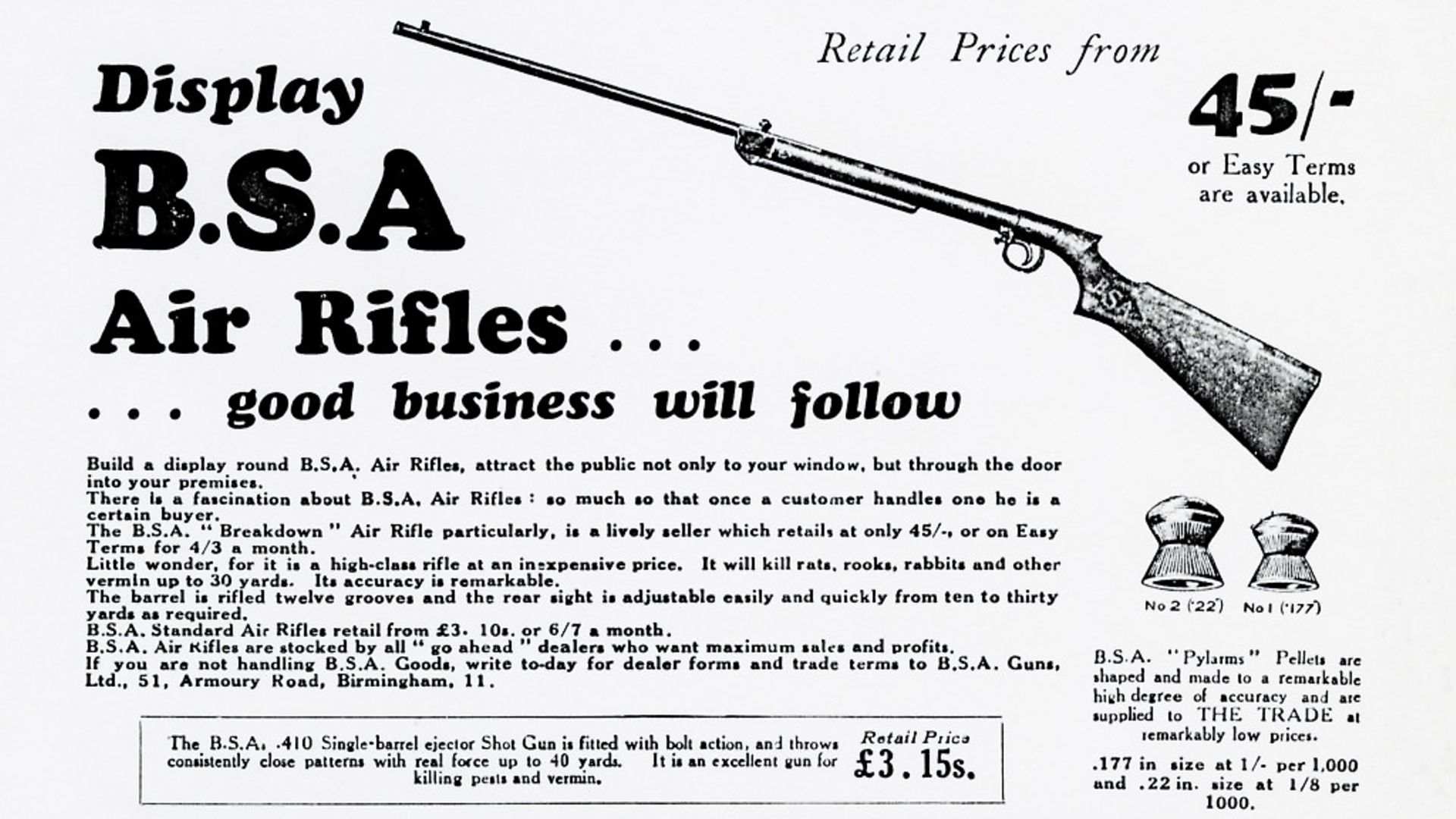 credit: Archant
credit: Archant
FAIRGROUND RANGE
Most Breakdown models were rifled with 12 grooves running counter-clockwise, but smoothbores were available for dart shooting, as I’ve already stated. Frankly, the anti-clockwise rifling makes no difference to clockwise in a small .177-inch air rifle calibre, in my opinion, no matter which hemisphere you are shooting in, northern or southern. In a large calibre gun it certainly does.
A surprising number of these Breakdown models are found still with fore sight protectors in place. They were not included in the price of the rifle, but were always an extra. Underneath, the sight is safeguarded during transit of the rifle. At least two different height BSA bead fore sights appear to have been fitted to Breakdown models and I suspect the decision to fit either tall or low, was at the factory target testing stage depending on how the rifle or gun shot, or maybe previous owners have changed them. Although seen in two different heights, the Breakdown model fore sights appear the same as those fitted to the ‘L’, ‘A’ prefix and other under-levers but the dovetail was moved rearwardly. The reason for this wasn’t immediately obvious to me, but the fore sight was set rather far back to allow a piece of brass or copper tube to be rammed onto the muzzle for fairground cork range use.
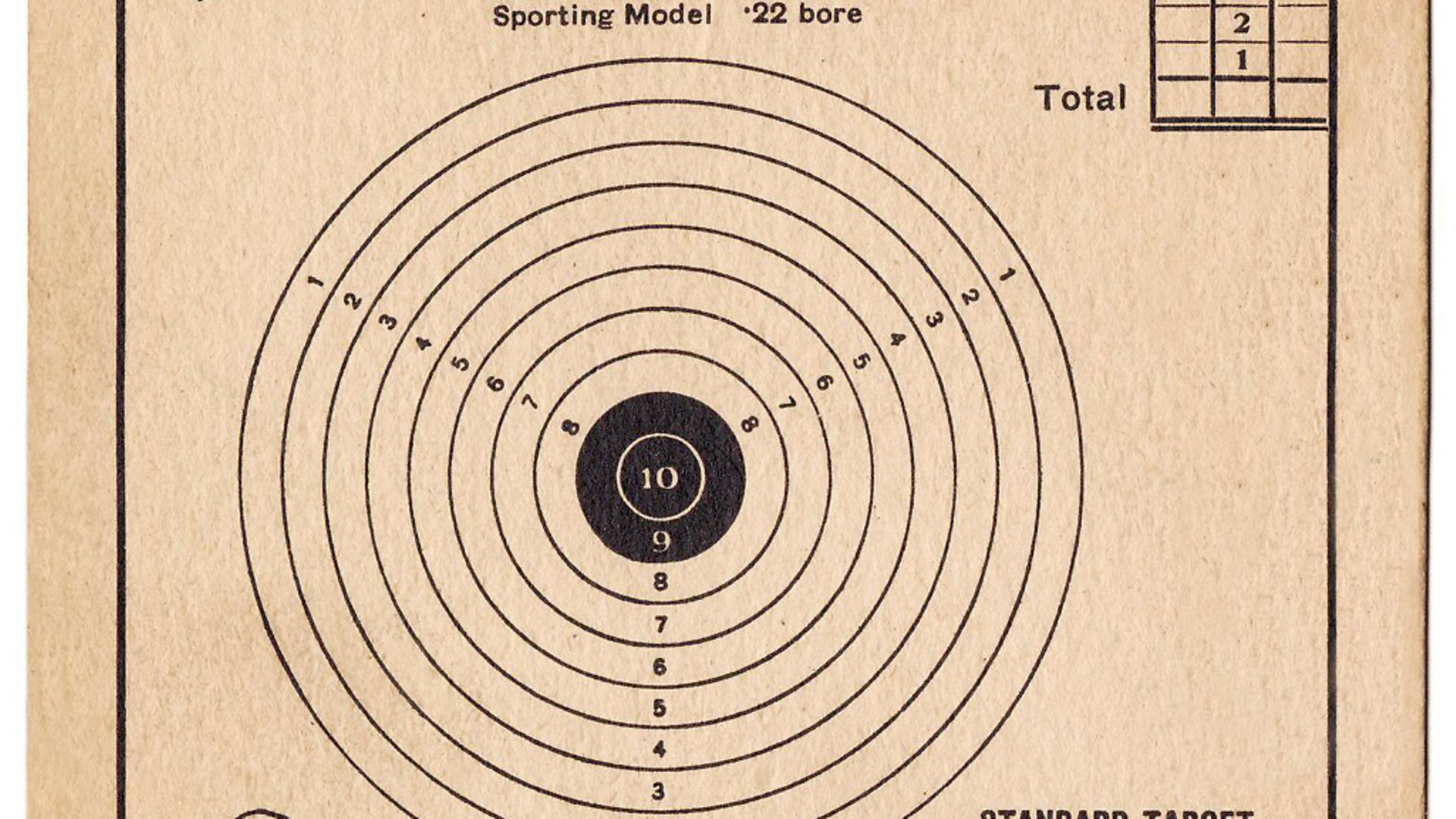 credit: Archant
credit: Archant
SPORTING BENEFITS
Eighty five years ago, BSA advertised their Breakdown model air rifle at 45 shillings (£2.25) in the Meccano Magazine of April 1936, reproduced as Figure 12 The sub-heading of the advertisement proclaimed the sporting benefits that ownership of the rifle offered. Made only in No. 1 bore, the BSA ‘Breakdown’ break-barrel air rifle would have been happy with a diet of the .177 ‘Wasp’ pellets from the red tins seen in Figure 13; or the BSA ‘Pylarms’ – which were exactly the same pellets. The .22 ‘Wasps’ in blue tins would have suited the BSA Sporting Pattern No. 2 rifles.
Some years ago, Mr. S. Gardiner kindly sent me photographs of the fine BSA barrel-cocking air rifle he had been given, serial numbered B4746 that I believe dates from 1937, by which time the price had risen to £2.10.0. (£2.50). The original and only owner was an Irish friend of Mr. Gardiner’s who had naval connections. Earlier Breakdown Pattern models made from 1932 and sold from January 1933-1935 had earlier cost 45 shillings or £2.5.0. (£2.25), as can be seen in the earlier advertisements for the rifle. Mr. Gardiner’s BSA Breakdown Pattern number B4746 can be seen in Figure 14, the heat-impressed chequering panel on the butt incorporating the BSA initials. It’s a fine example with clear etching, unlike most of the ‘Breakdown’ models I’ve seen so far, where handling wear has removed the fragile markings from the cylinder tops.
Another stamping on Mr. Gardiner’s rifle appears on the right side of the trigger itself, and this is the unusual feature of his Breakdown model because it’s something I probably haven’t seen before. In fact, the main reason for sending the photographs to me was the hope I could identify the mark on the trigger: Figure 15 shows the curious trigger stamping on the BSA ‘Breakdown’ model no. B4746, which is believed to be an inspector’s or proof mark, which I am no wiser about than when I first showed the mark back in May 2012.
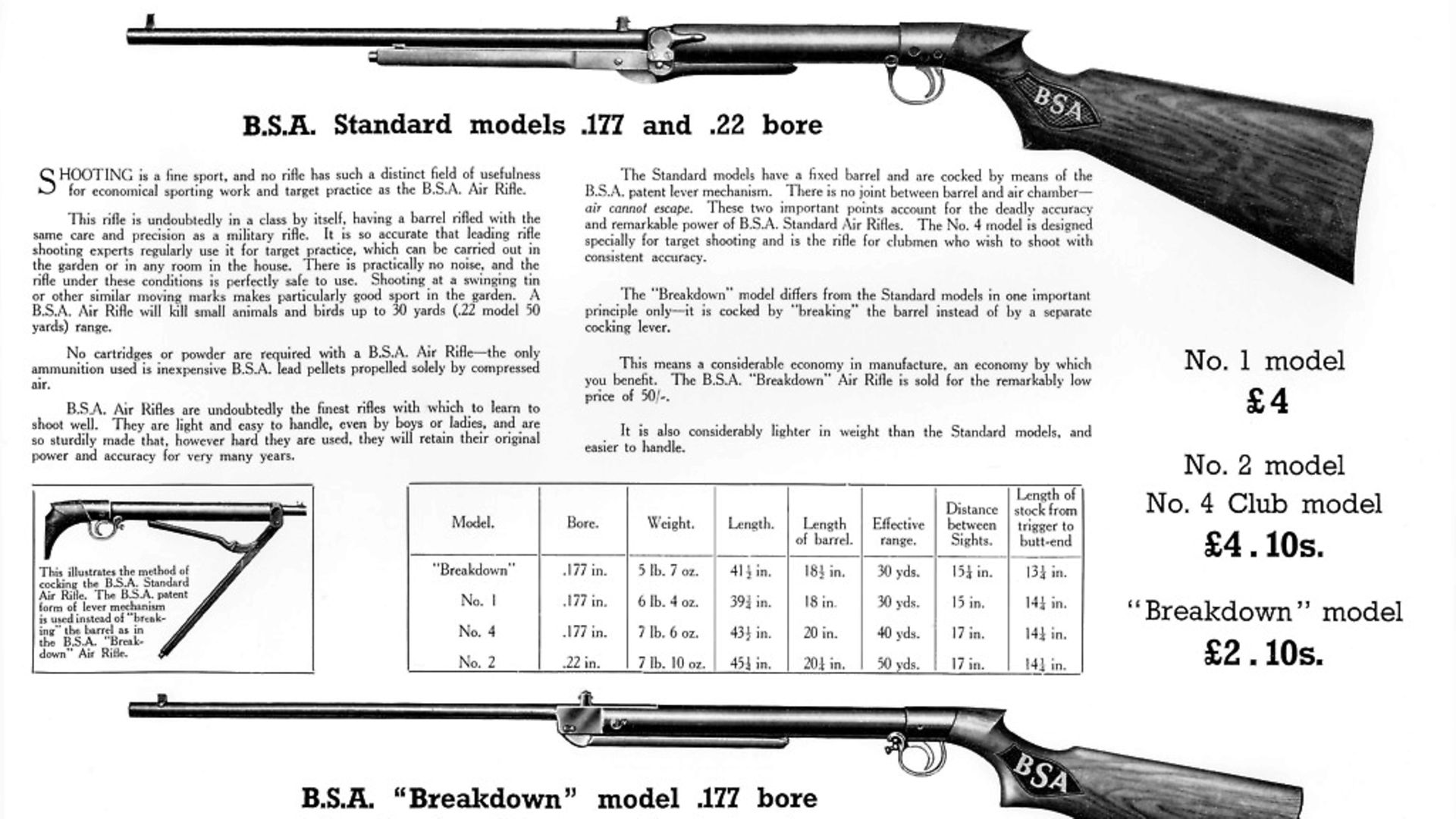 credit: Archant
credit: Archant
MYSTERY MARKING
Despite a long search of the Internet and of books such as Col. Robert Gardner’s ‘Small Arms Makers’; Byron’s ‘The Official Guide to Gunmarks’, etc., I’ve came up with nothing as close as the mark Mr. Gardiner had already found during his own research, which looks a bit similar, but is actually a 15-toothed circle surrounding the star of the Republic of Italy and a mark of the Italian Proof House at Gardone Val Trompia (Near Brescia) so there might be no connection. Mr. Gardiner also took this to May of London, but they, too, were unable to identify the marks. I do seem to recall a similar circular small stamp into the woodwork of a BSA under-lever I once examined, but I see a lot of items and can’t remember them all. Maybe a reader will have a suggestion about the curious marking. If you know the answer please inform me so I can relay the information to Mr Gardiner.
A right-hand view of the breech area showing the turret rearsight with ‘L’-section blade and strong cast cocking lever is given in Figure 16. The serial number of Mr. Gardiner’s Breakdown Pattern BSA B4746 c.1937 is shown in Figure 17. The numbers of both Breakdown models, A Series Light under-lever models and others, now appear less obtrusively moved down to this lower position on the trigger blocks just above the trigger, rather than further up on the side of the block, as on earlier BSA under-levers.
Electrolytic markings on the cylinder feature in Figure 18; the etched legend in capital letters being: The BSA Air Rifle Breakdown Pattn. .177 Bore The Birmingham Small Arms Co Ltd England surrounding the piled arms registered trademark of BSA which had been applied for 7th May 1900.
The BSA Breakdown pattern filled the gap for a cheaper, reliable break-barrel model, but the initial cost of 45 shillings (£2.25) was still more than many could afford because that was often the weekly wage for a labourer. To put that in perspective, a new 1933 family house could be bought for £395 freehold – or 9/6d (47½p weekly).
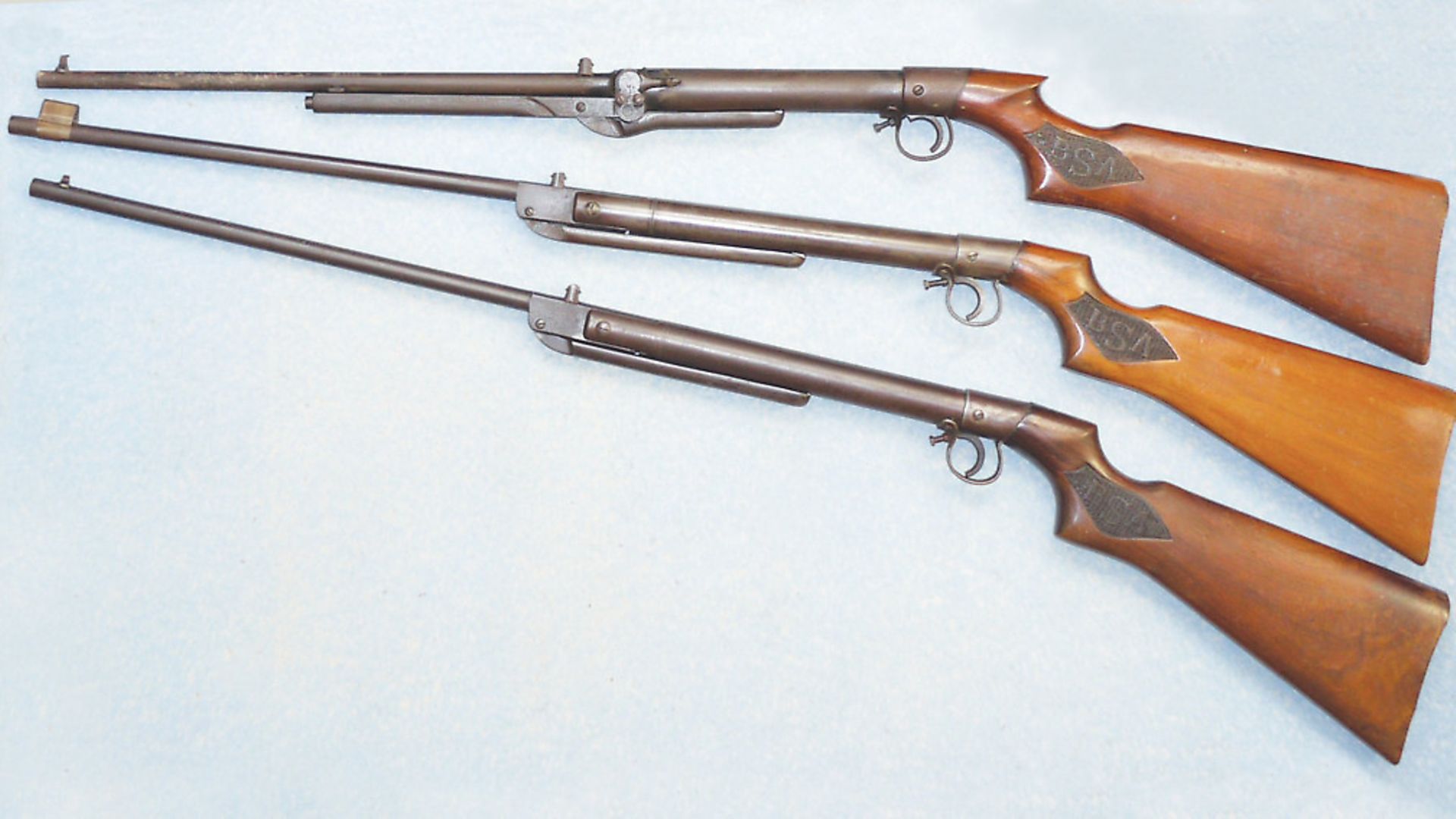 credit: Archant
credit: Archant
ACKNOWLEDGEMENTS: My thanks again to Mr. S. Gardiner and to Wallis & Wallis, auctioneers for photographs
SOURCES: The Sporting Goods Review and The Gunmaker January 31 and Feb 28, 1929; Harper’s Sports and Games Distributor May 1934; The Golden Century History of the Commercial Gun Production of B.S.A. by John Knibbs 2002; Boy’s Own Paper June 1929; Parker’s Complete Catalogue of Arms and Accessories No. 10G., June 1930 and Meccano Magazine April 1936
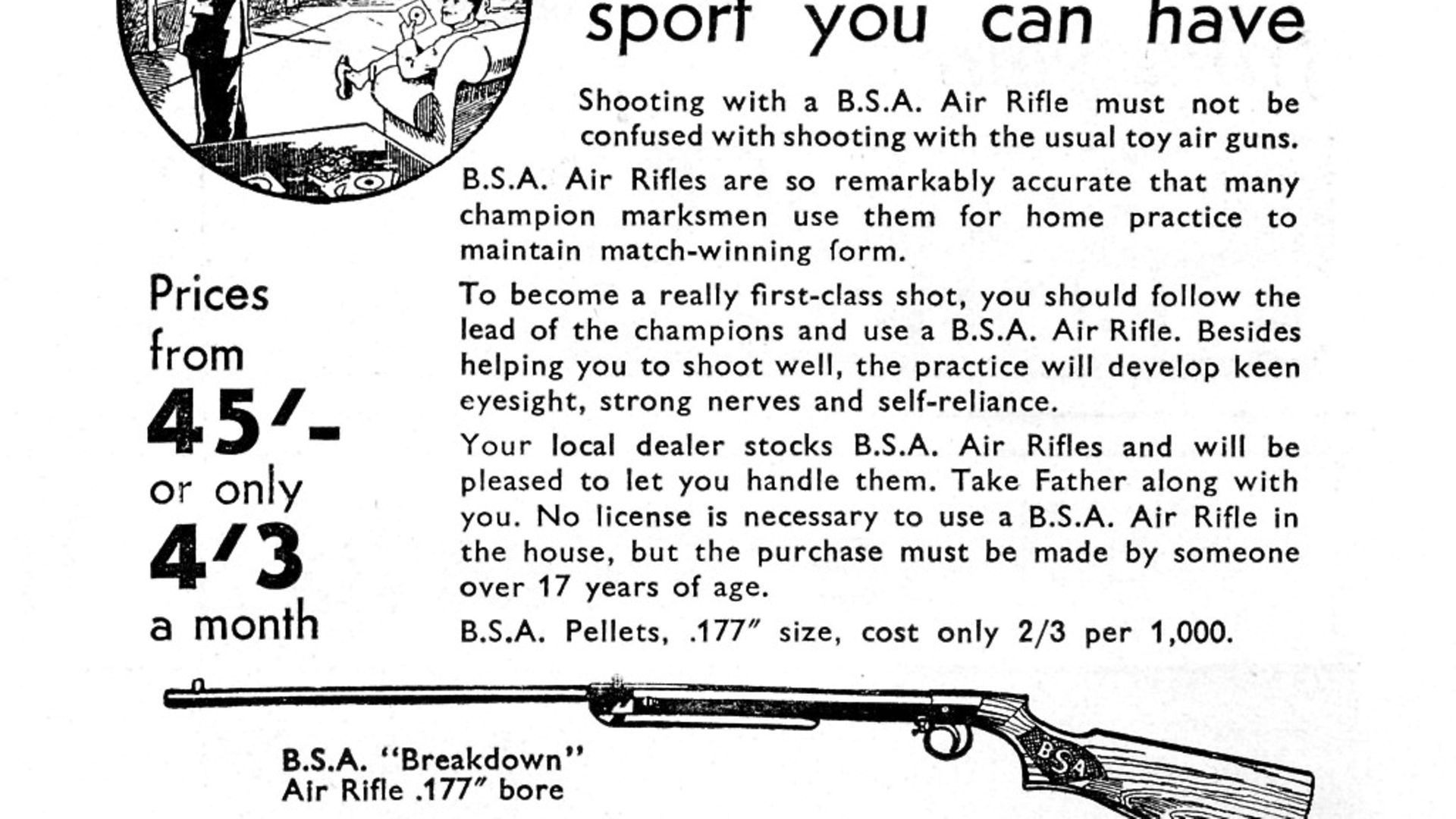 credit: Archant
credit: Archant
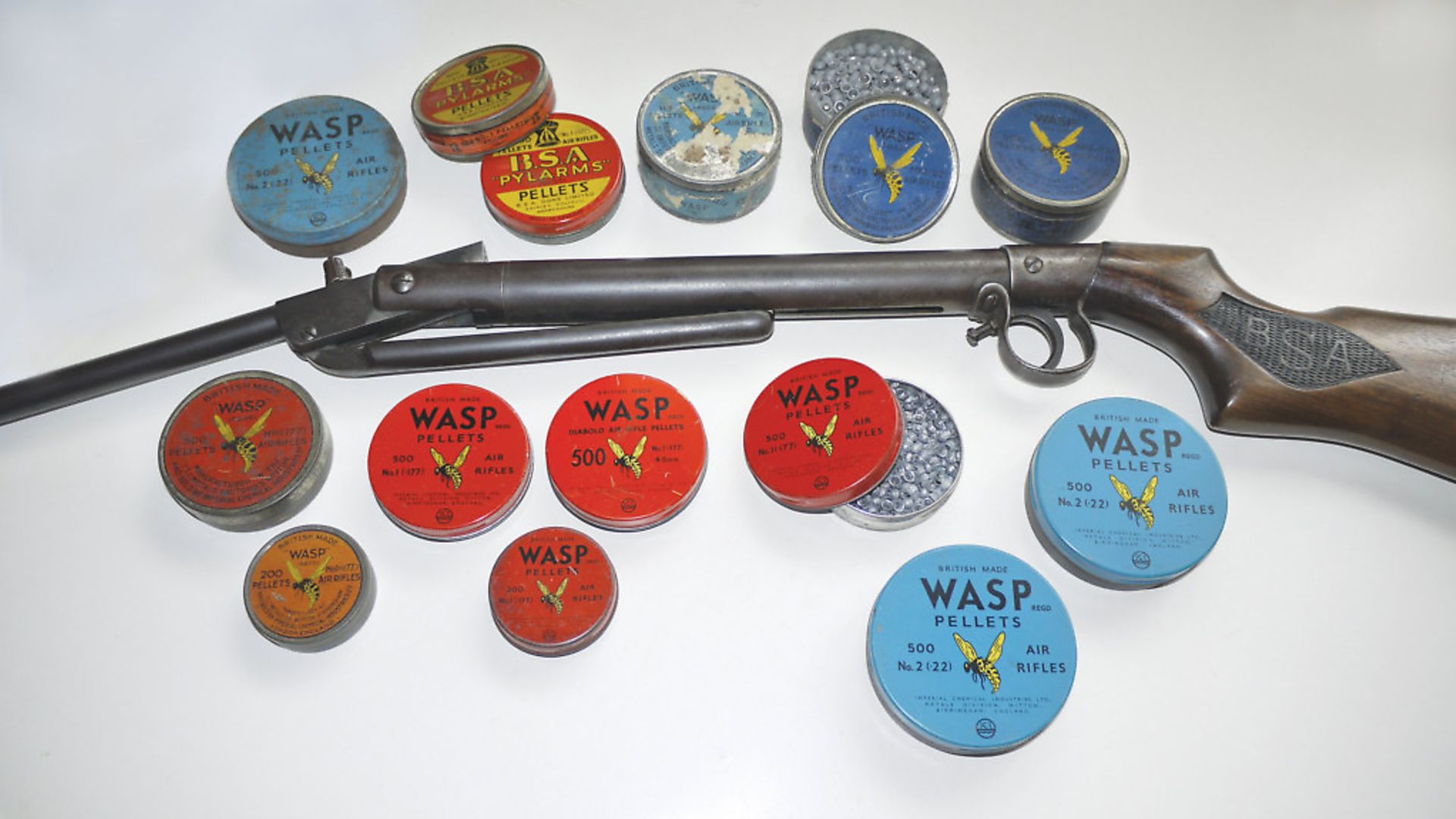 credit: Archant
credit: Archant
 credit: Archant
credit: Archant
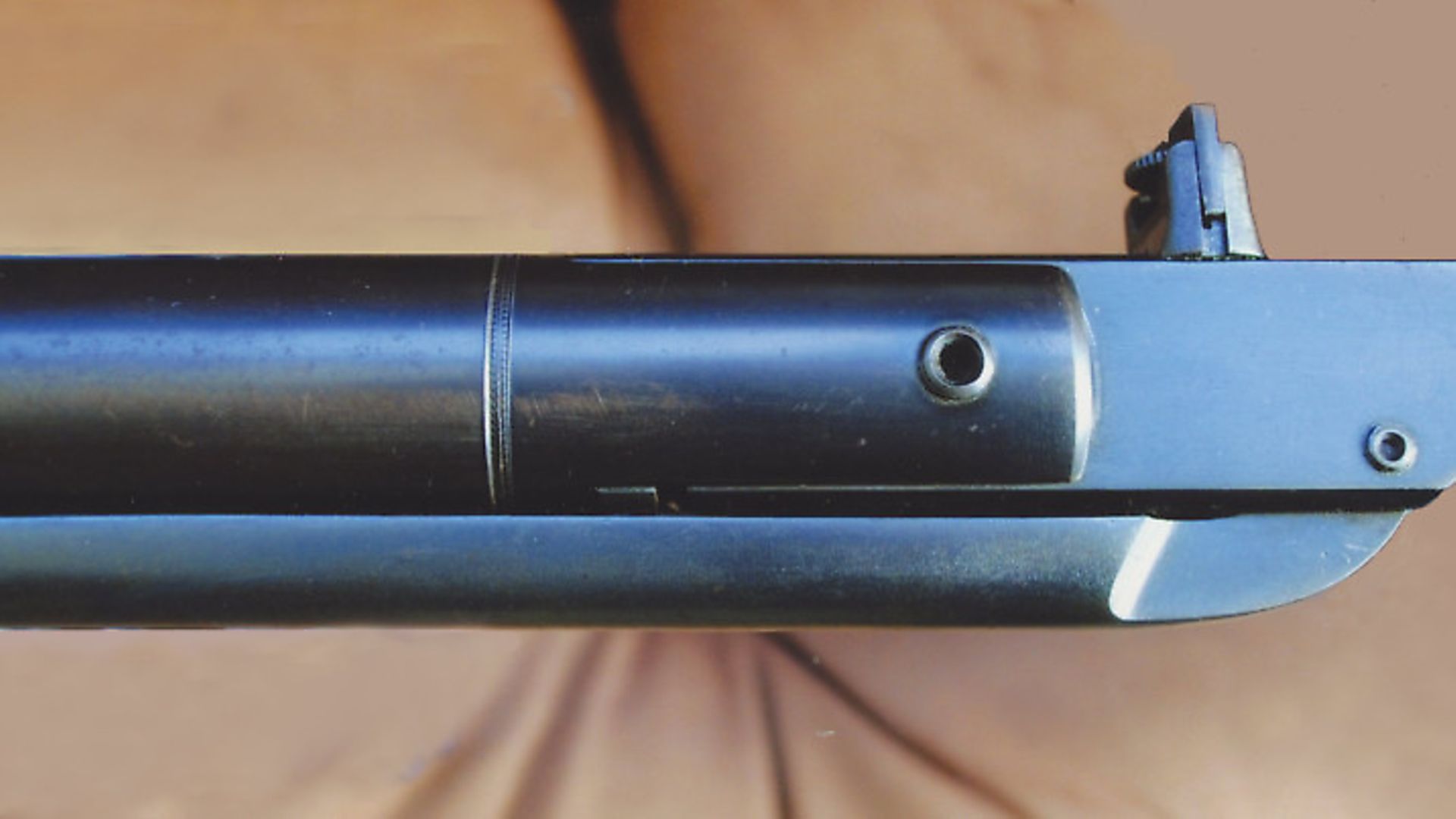 credit: Archant
credit: Archant
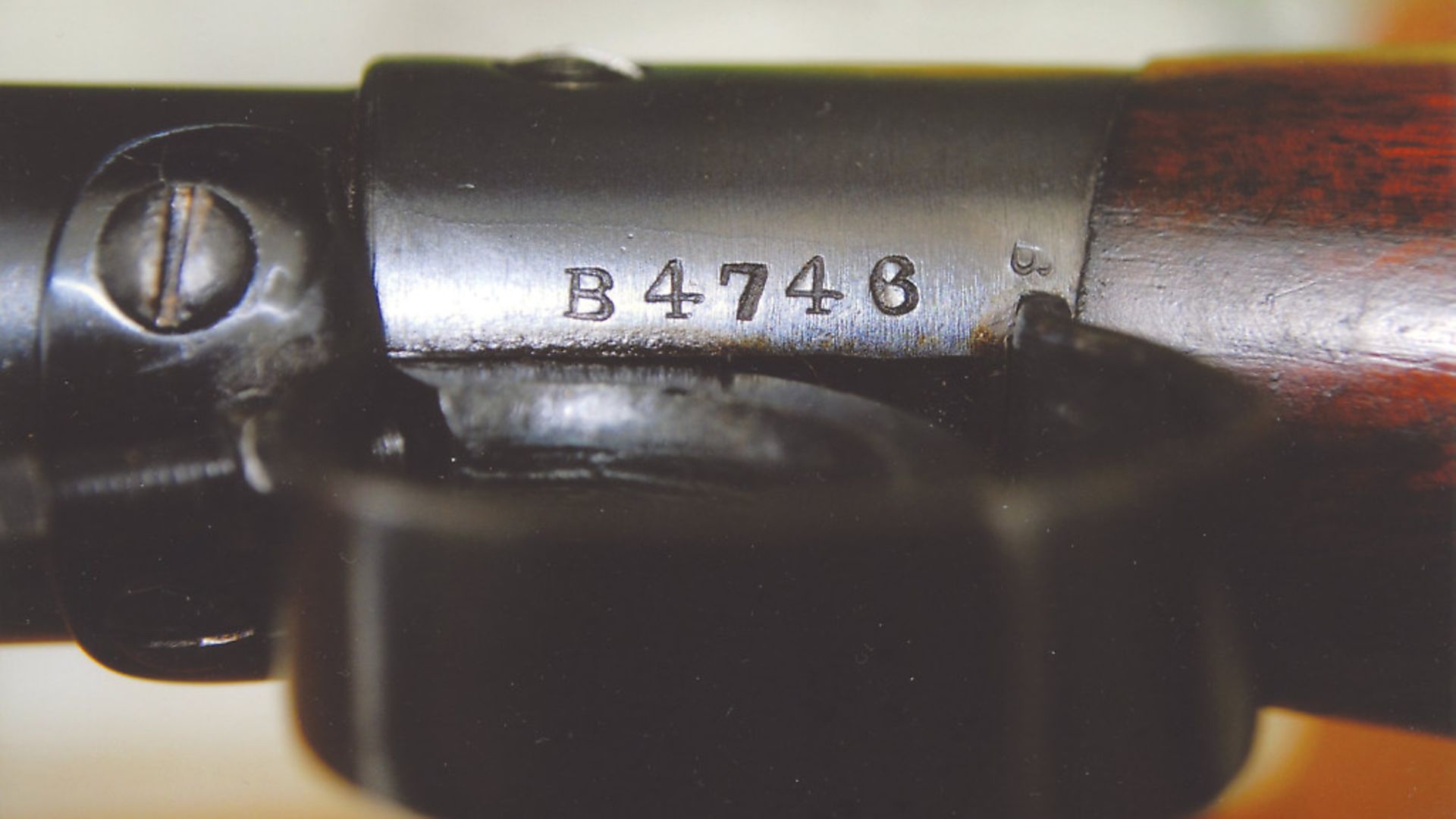 credit: Archant
credit: Archant
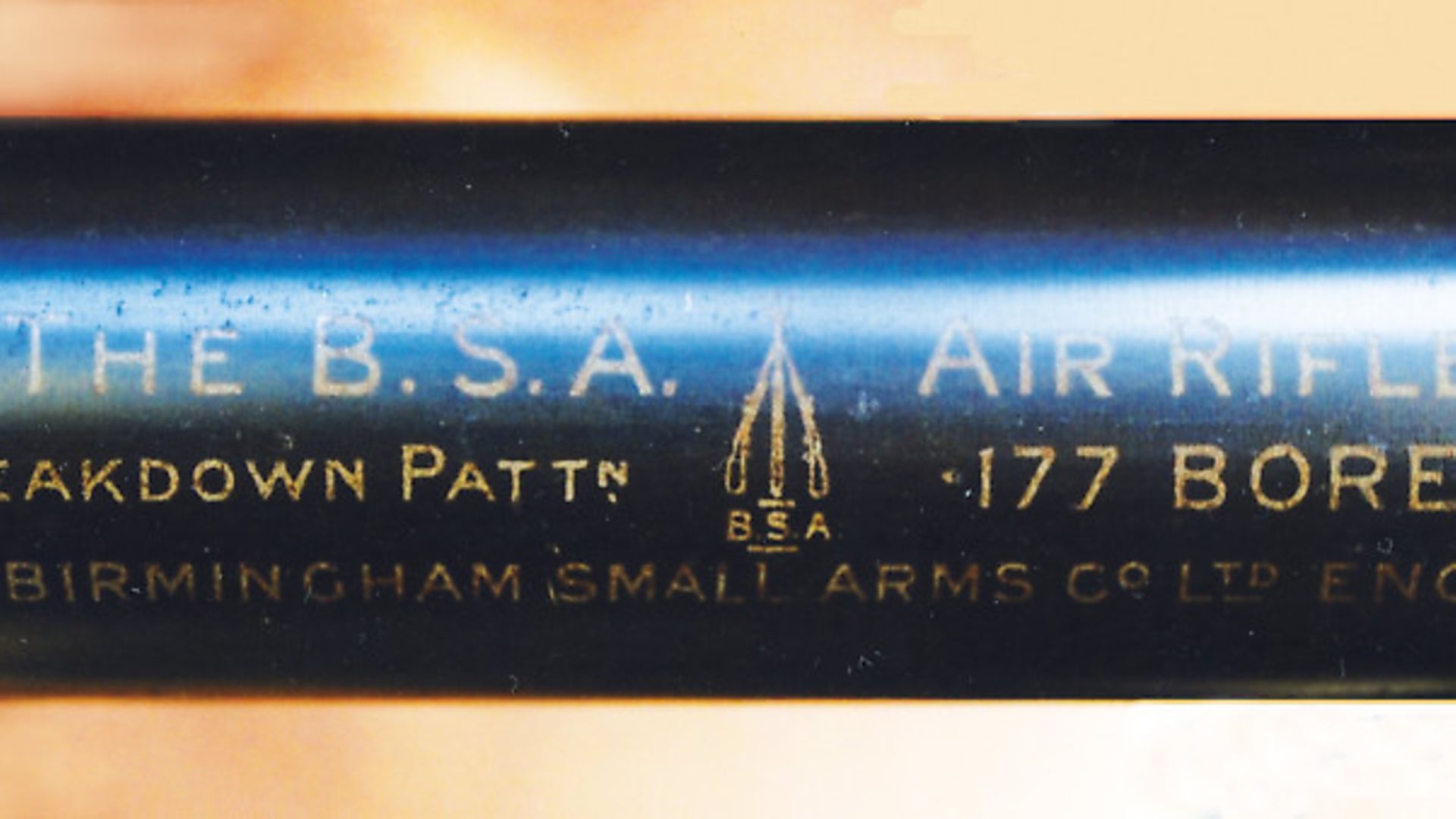 credit: Archant
credit: Archant
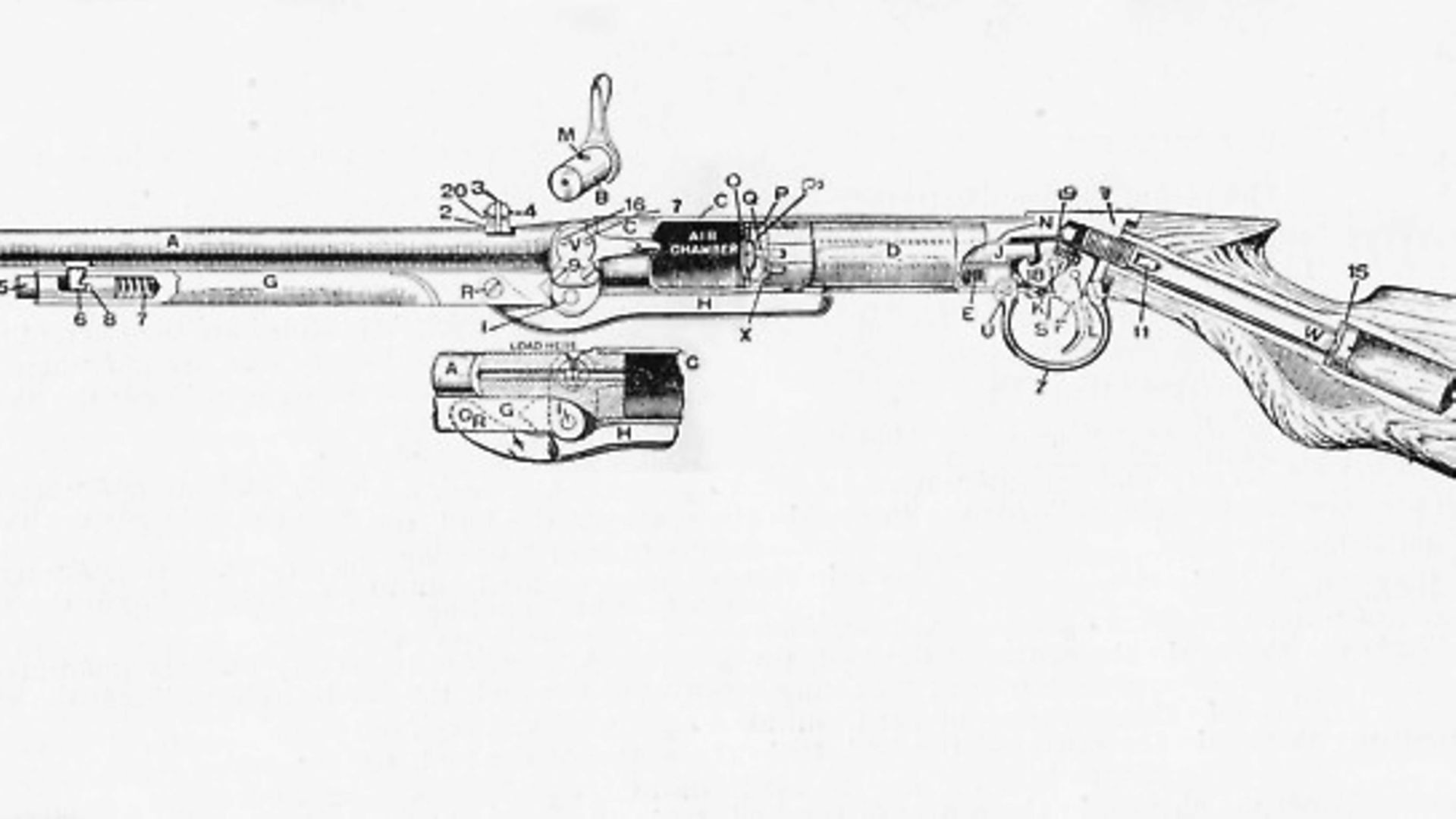 credit: Archant
credit: Archant
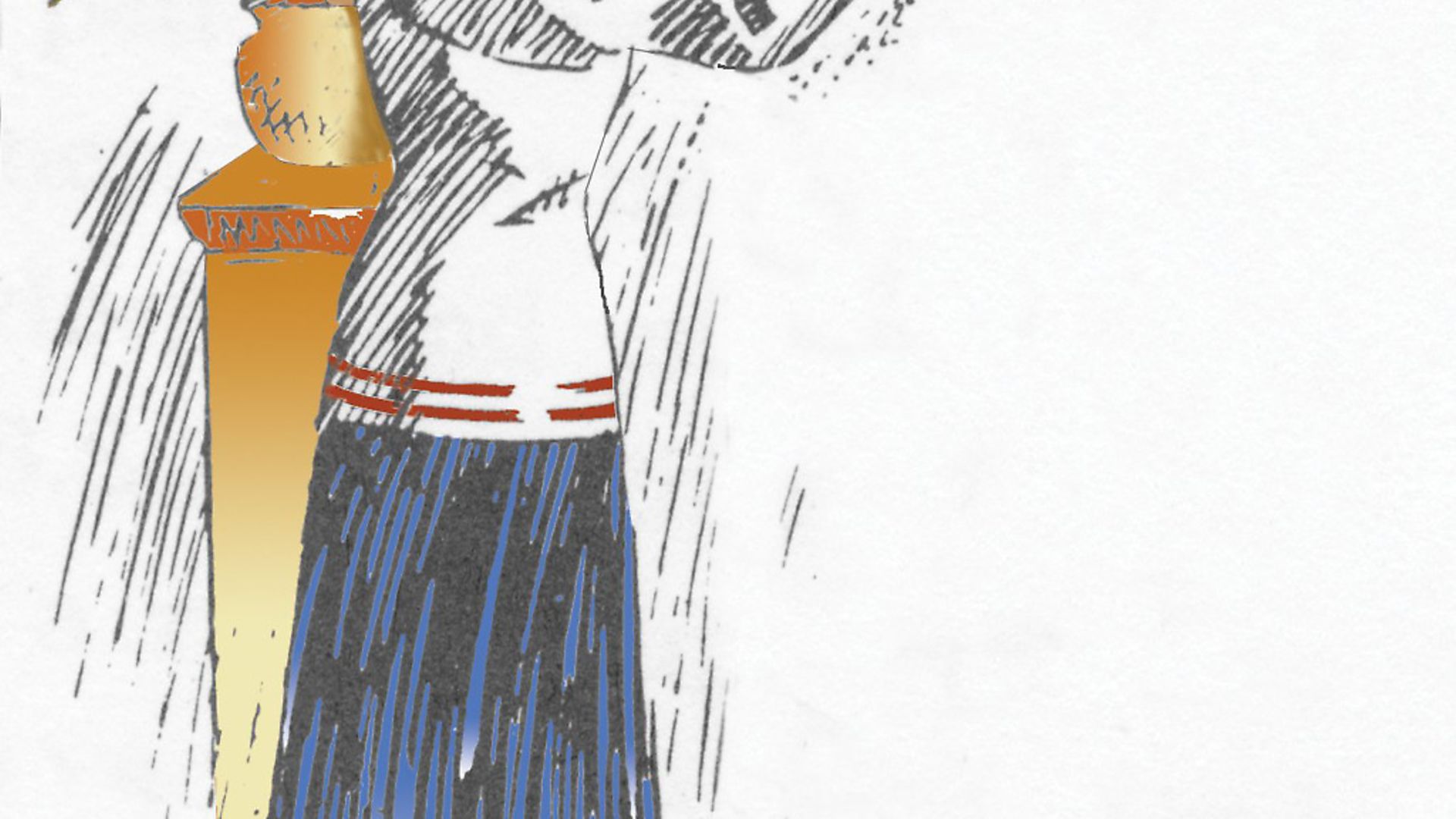 credit: Archant
credit: Archant